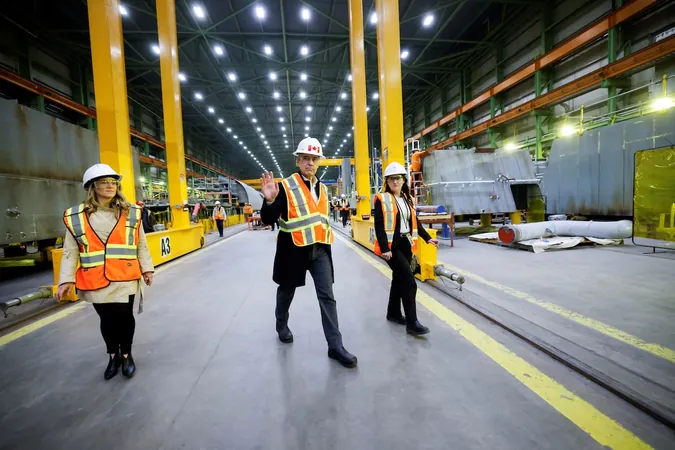
Mark Carney Unveils Bold Defence Spending Plan: New Submarines, Drones, and Pay Increases!
2025-03-25
Author: William
A New Era of Defence Investments
"We will deliver an unprecedented acceleration of investment in our Armed Forces,” Carney declared, making it clear that his government would prioritize national security. The commitment comes as NATO allies, including the United States, pressure Canada to boost defence spending to at least 2% of its Gross Domestic Product by 2030. Carney aims to meet this standard ahead of schedule.
When questioned about the future of Canada's planned order of 88 U.S.-made F-35 fighter jets, which is currently under review, Carney mentioned exploring alternatives that could generate more domestic investment. He noted that Lockheed Martin has expressed willingness to enhance Canadian job creation if their defence contracts are fully awarded.
Prioritising Economic Benefits for Canadians
As part of his strategic overhaul, Carney signaled a preference for using Canadian-made materials in defence contracts, vowing that “defence contractors will be required to use Canadian steel and aluminum.” This approach aims to boost local economies and capture the benefits of military procurement within Canada, rather than outsourcing funds abroad.
Carney's pledge also extends to rewriting the mandate of the Canadian Coast Guard to enhance maritime surveillance, addressing critical areas such as illicit drug trafficking and the protection of Canadian coastal waters.
Addressing Staffing Shortages and Modernizing Forces
The Liberal leader's plan goes beyond equipment; it also addresses the current staffing crisis within the Canadian Armed Forces, which faces a shortage of 14,500 personnel. Carney proposes plans to modernize the recruitment process, offer meaningful pay raises, enhance on-base housing solutions, and improve healthcare and mental health services for military members.
Additionally, he aims to foster international collaborations for the procurement of next-generation aircraft, ensuring that Canada remains competitive on the global defence front.
Critics Raise Concerns
However, not everyone is sold on Carney's promises. Conservative defence critic James Bezan highlighted the lack of specific details, particularly regarding the number and cost of submarines and icebreakers. He pointed to the dilapidated conditions of Canada’s military assets, asserting that under a Carney-led government, critical military resources might continue to deteriorate.
With the election looming, Carney’s defence strategy could reshape Canada's military landscape. As voters consider their options, the question remains: Can Carney deliver on these ambitious promises, or will Canada’s military aspirations be left unfulfilled?









 Brasil (PT)
Brasil (PT)
 Canada (EN)
Canada (EN)
 Chile (ES)
Chile (ES)
 Česko (CS)
Česko (CS)
 대한민국 (KO)
대한민국 (KO)
 España (ES)
España (ES)
 France (FR)
France (FR)
 Hong Kong (EN)
Hong Kong (EN)
 Italia (IT)
Italia (IT)
 日本 (JA)
日本 (JA)
 Magyarország (HU)
Magyarország (HU)
 Norge (NO)
Norge (NO)
 Polska (PL)
Polska (PL)
 Schweiz (DE)
Schweiz (DE)
 Singapore (EN)
Singapore (EN)
 Sverige (SV)
Sverige (SV)
 Suomi (FI)
Suomi (FI)
 Türkiye (TR)
Türkiye (TR)
 الإمارات العربية المتحدة (AR)
الإمارات العربية المتحدة (AR)